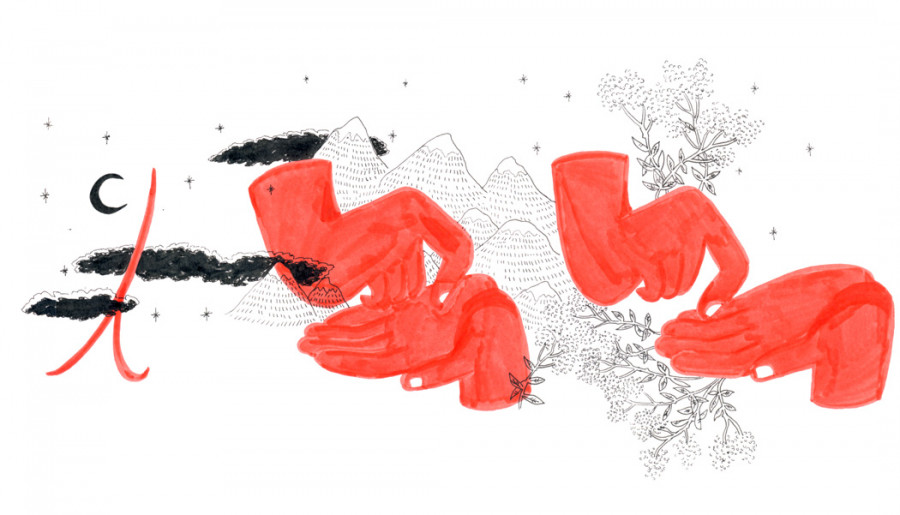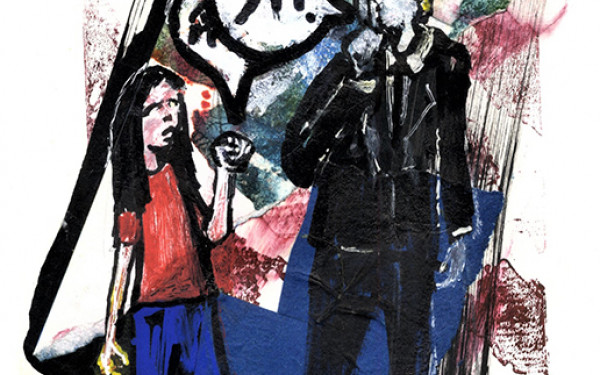Sign O’ The Times
SKOL Workshop Teaches the History and Art of Sign Language
UPop Montreal and SPiLL.PROpagation are offering four workshops at the Centre des arts actuels (SKOL) that explore literary creations in sign languages. This opportunity offers a chance for individuals to discover this arcane form of literature. Proficiency in sign languages is needed for the creative workshops, but the analytical ones are open to those who want to learn about literature in sign languages, its history and its art scene.
The creative workshops are given by Daz Saunders, who speaks three sign languages and completed a bachelor’s degree in Theatre. The analytical workshops are provided by Julie Chateauvert, who completed a PhD in Arts Practice studies, which focus on literary criticism regarding creative works in sign languages.
“These workshops are to create an open circle where ideas and tools are shared freely between us in order to inspire each other with our own creations and give/receive feedback,” explained Saunders.
Julie Chateauvert views these workshops as an open circle propelling a continuous conversation about sign language literature. The analytical workshops examine multiple components of literary creations in sign languages.
“I call the analysis part of the workshop L’école du regard,” Chateauvert said. “The expression comes from Hubert Godard, a scholar and practitioner of movement analysis. It says that the capacity to see movement is deepened by the practice of attentively watching it.
“Layer by layer, building on each person’s singular background of knowledge, we’ll learn to see a sign language piece of literature by asking ourselves where the piece comes from, where is it in Deaf art history, how does it relate to other artistic disciplines, what is it made of, what technique is used, how can I look at it [from a movement perspective, visual perspective and narrative perspective], and also what relation between languages is involved and what it tells us about the way we live together.”
Saunders explained that the creative series of workshops explores the use of the body, arms, hands, fingers, head, eyes and facial expressions and how these body parts can be used in creative narratives.
“We discuss the uses of speed, tension, pauses and rhythm used in signed expressions,” Saunders explained. “We encourage [participants] to explore all possible avenues and some have said to us that they have found something in their work that they have not thought of before.
“I really want to move away from thinking that they need to create something perfect and beautiful—a signed creation itself can be harsh and raw sometimes.”
Saunders and Chateauvert are inspired to explore people’s creativity through literary creation in sign languages. They hope that this workshop will encourage more people to express themselves in sign language for generations to come.
“There are so many people, Deaf and hearing, who have the capacity to be creative in either Quebec sign language [known as langue des signes québécoise, LSQ] and American sign language. We need to encourage these people to develop their capacity to become creative,” explained Saunders.
In addition to exploring people’s creativity, these workshops promote Deaf culture and art in the mainstream art scene in Montreal.
According to Chateauvert, the Deaf and sign language scene is rich and very energetic, with visual art, film and theatre festivals dedicated to promoting Deaf art.
“You have a international Deaf Art and Film Festival in Toronto. You have, here in Montreal, ‘Seeing Voices,’ a collective theatre where Deaf and hearing people work together to produce bilingual performances. Mainstream society just doesn’t see Deaf art,” said Chateauvert.
Saunders and Chateauvert would like to see a lot of things change regarding the visibility of Deaf culture, the accessibility of art forms to Deaf people and the opportunities offered to Deaf artists.
“I would love to see opportunities for Deaf artists to participate in mainstream events here in Montreal and the mainstream events themselves [be] accessible to the Deaf patrons too,” Saunders said. “I love theatre but it’s hard to have equal access to theatre […] here in Montreal.
“When I say access, it would be in the form of interpretation between spoken language and sign language such as French/LSQ or English/ASL,” Saunders continued. “If I can watch the latest production of Richard III at TNM [Théâtre du Nouveau Monde] with a sign language interpreter, I would be so happy!”
Saunders and Chateauvert’s last two workshops will be offered at SKOL on March 26 and April 9. They are open to everyone.
Introduction to Narrative Creations in Sign Languages // Mar. 26 and Apr. 9 // SKOL (Centre des arts actuels) // 6 p.m. to 9 p.m. // Free


_600_832_s.png)

1_600_375_90_s_c1.jpg)

_600_375_90_s_c1.jpg)
2_600_375_90_s_c1.jpg)